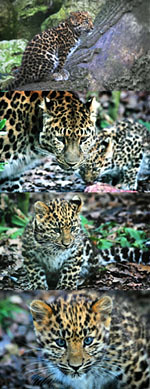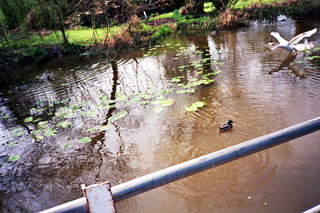
Persistence hunting is a method that sees hunters pursuing their prey, often for hours or sometimes for days on end, until it either dies from exhaustion or becomes so weakened it is a trivial matter to catch it.  This may seem like a bizarelly single minded approach to hunting for food but amongst contemporary cultures where the approach is still practiced there is statistical evidence of its phenomenal success rate compared to other methods, and many anthropologists argue that persistence hunting played an important role in our evolutionary development as it placed us in an unparalleled position of selectivity.
This may seem like a bizarelly single minded approach to hunting for food but amongst contemporary cultures where the approach is still practiced there is statistical evidence of its phenomenal success rate compared to other methods, and many anthropologists argue that persistence hunting played an important role in our evolutionary development as it placed us in an unparalleled position of selectivity.
In a more geographically localised example of persistence, Saxton Pope in his anthropological tome Hunting With the Bow and Arrow marvels at the efforts of a native North American Indian.
"Another prominent feature of Ishi's work in the field was his indefatigable persistence. He never gave up when he knew a rabbit was in a clump of brush. Time meant nothing to him; he simply stayed until he got his game. He would watch a squirrel hole for an hour if necessary, but he always got the squirrel." What approach do you take to hunting down the goals of your photographic sustenance? Do you meander about with no fixed prey in mind seeing what you might stumble upon? Do you fling youself headlong into a herd of potential image making opportunities hoping that amidst the confusion you happen to come out with something of digestive value caught in your teeth? Or are you prepared to focus on your chosen target and pursue it for hours, for days, or if necessary for years in order to capture it?Ever since I first experienced a Mute Swan taking off from a body of water at Throop Mill in Dorset, I have known that I will go hungry until I manage to capture an image fit to encapsulate the sheer power and grace of such an occurence. I keep returning to that same location knowing that one day, surely, I must find myself in a position to close down on my photographic prey. Eventually I even invested in a lens with a longer reach to ensure I could maximise the compositional impact of the kill.
One day I was there and a swan chose the moment to take to the air.
And where was I when this happened? Over a barrier snapping away at some random doves, some rushing water, some rusted machinery, none of which were feeding any deep rooted photographic desires within me but they did give me something to chew on idly while the swans were content to just get on with their seemingly interminable rounds of bottom feeding and preening. The best I could manage was to hoist my compact rangefinder aloft and shoot over the heads of some bypassing ramblers as the swan powered past me on the other side of the barrier.
Through lack of persistence I had merely caught a glimpse of my target and stirred my hunger all the more painfully.
If we look at the contact prints for films shot by the likes of Cartier Bresson we see image after image of the same subject that is of no great significance, then some that are almost there. Then we see the singular encapsulation of the moment that becomes an image of enduring notoriety. Such images were not captured through adopting a scattergun approach to image making or through merely pottering about seeing what fate might offer us. They were captured through the persistent hunting down of a vision.
I will catch my image of a swan taking off, even if it takes me years to do so.
An example of the benefits of persistence - Leopard images courtesy of Serena M.
Further reading: The Energetic Paradox of Human Running and Hominid Evolution



0 Comments:
Post a Comment
<< Home